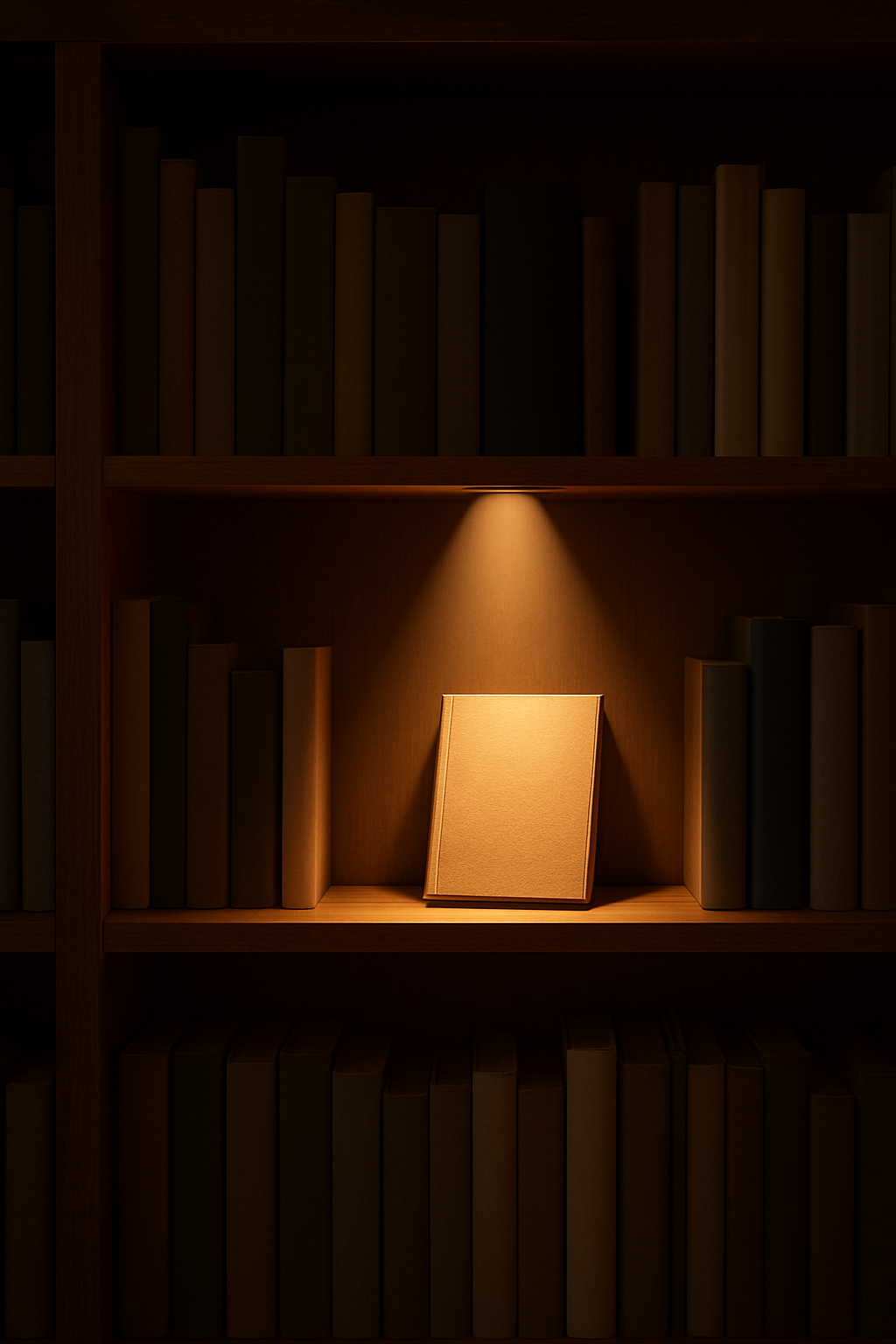The Bookshelf and Spotlight Visualization: A Practical OCD Coping Skill
What Is the Bookshelf and Spotlight Technique?
Living with OCD can feel overwhelming, especially when intrusive thoughts pop up and demand all of your attention. You may notice how one thought can suddenly feel louder, bigger, and more urgent than anything else.
The “Bookshelf and Spotlight” visualization is a coping skill that can help you manage intrusive thoughts without trying to fight them. It gives you a way to step back, notice your thoughts, and practice focusing your attention where you want it to go.
Here’s how it works: imagine your mind as a giant bookshelf filled with thousands of books. Each book represents a thought, memory, or worry. A spotlight shines on one book at a time. OCD tends to pull the spotlight onto the “intrusive thought” books, making them feel like the only thing on the shelf.
This exercise helps you practice gently moving your spotlight onto a different book—without throwing away or battling with the unwanted ones.
Guided Script for the Visualization
Here’s a simple script you can follow to try the Bookshelf and Spotlight technique for OCD intrusive thoughts:
Close your eyes and take a deep, calming breath.
Picture a large bookshelf filled with books. Some represent neutral thoughts, some represent enjoyable memories, and some are intrusive or distressing.
Notice the spotlight shining brightly on one book. Maybe it’s an intrusive thought that OCD wants you to focus on.
Instead of trying to remove the book, let it stay on the shelf. Remind yourself: “This is just one of many thoughts. It doesn’t need to control me.”
Gently shift the spotlight onto another book. This could be a neutral thought like “what I’ll eat for dinner” or a positive thought like “a memory of a trip I enjoyed.”
If your spotlight drifts back to the intrusive thought (and it probably will), notice it without judgment and practice gently guiding it back again.
The goal isn’t to erase intrusive thoughts—it’s to practice moving your attention in a more intentional direction.
How to Use This Skill with OCD
The Bookshelf and Spotlight visualization is most powerful when used alongside Exposure and Response Prevention (ERP), which is the gold-standard treatment for OCD. ERP teaches you how to face intrusive thoughts without doing compulsions, and this visualization gives you a mental framework for how to respond.
Here’s how you can apply it:
When an intrusive thought shows up, picture it as a book on your shelf.
Allow it to exist without trying to get rid of it.
Then, practice shifting your spotlight toward something that aligns with your values—like being present with family, focusing on work, or simply enjoying a moment of calm.
With practice, this tool helps reduce the power of intrusive thoughts and strengthens your ability to direct your focus toward what truly matters.
Final Takeaway
OCD intrusive thoughts can feel overwhelming, but they don’t define you. The Bookshelf and Spotlight technique is a gentle and practical way to notice intrusive thoughts, let them stay, and shift your focus toward what matters most. Like any skill, it takes practice—but over time, it can help you regain a sense of choice and freedom in where your attention goes.
📌 Quick Practice: Bookshelf and Spotlight for OCD
Picture a bookshelf filled with books (each one is a thought).
Notice where the spotlight is—often it’s shining on an intrusive thought.
Remind yourself: “This is just one thought. It can stay on the shelf.”
Shift the spotlight gently to a different book (neutral or meaningful).
Repeat as needed. If the spotlight drifts back, just notice and guide it again.
👉 This isn’t about erasing thoughts—it’s about choosing where to focus your light.
🌱 Call to Action
If you’re living with OCD, you already know how overwhelming intrusive thoughts can feel. The good news is—you don’t have to face them alone. At K8 Therapy, I specialize in evidence-based treatment like ERP and practical coping tools, including the Bookshelf and Spotlight visualization, to help you build freedom from OCD.
💬 Ready to take the next step? Reach out today and let’s talk about how therapy can support you.
